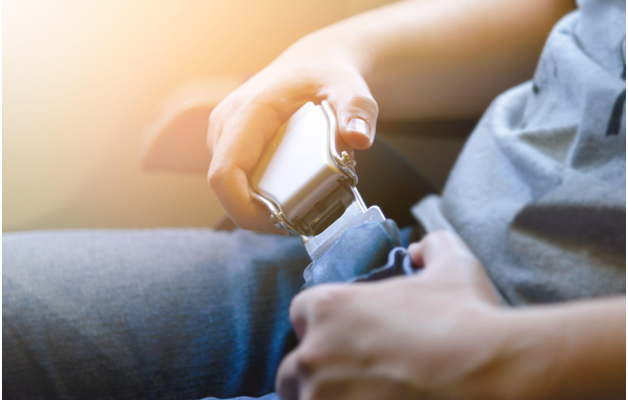Fasten Seatbelts, Not Ankles: The Dangerous Flight Hack You Should Avoid
For many economy-class travelers, sleeping on a long-haul flight feels nearly impossible. Passengers often resort to purchasing neck pillows, foot hammocks, or twisting themselves into awkward positions just to catch a few inflight Zs. Most of these sleep attempts, while sometimes ineffective, are harmless. However, a new “flight hack” circulating on TikTok and Instagram has alarmed safety experts and airline professionals.
The Risky Seatbelt Sleep Trick
In viral videos with millions of views, passengers demonstrate a controversial sleeping method: pulling their knees to their chest, placing their feet on the edge of their seat, and securing their seatbelt around their ankles to prevent them from slipping. The idea is to create a stable position that allows them to rest their head on their knees.
While some travelers are eager to try this makeshift sleeping setup, flight attendants and aviation experts are warning against it.
Flight Attendants Issue a Warning
Sara Nelson, president of the Association of Flight Attendants-CWA, which represents 55,000 flight attendants across 20 airlines, didn’t hold back in criticizing the trend.
“This is extremely dangerous,” Nelson told CNN Travel. “Seatbelts are designed to fit low and tight across the lap to protect passengers during turbulence, emergency landings, or accidents. If you are not properly buckled in, you could injure yourself or someone else.”
Beyond safety risks, Nelson pointed out that this practice is a violation of federal regulations, and passengers refusing to comply could face fines up to $35,000.
A Blood Clot Risk?
Beyond immediate safety concerns, medical professionals also warn that buckling a seatbelt around the ankles could pose health risks, particularly increasing the chance of blood clots.
Dr. Nathan Connell, a hematologist at Brigham and Women’s Hospital and professor at Harvard Medical School, explained that restricting blood flow in the legs could contribute to the formation of deep vein thrombosis (DVT) or even a pulmonary embolism (PE).
“Anything that restricts circulation increases the risk of clotting,” Connell said. He also noted that while flights over four hours may slightly raise the risk, long-haul journeys over eight hours pose the greatest concern.
How to Sleep Safely on a Plane
Instead of resorting to unsafe tricks, passengers concerned about inflight comfort should follow these safer alternatives:
- Stay hydrated to support circulation.
- Wear loose, comfortable clothing that doesn’t restrict blood flow.
- Get up and move around during long flights whenever possible.
- Use an adjustable travel pillow or proper neck support instead of extreme postures.
Flying remains one of the safest modes of travel, and by taking simple precautions, passengers can arrive at their destination well-rested—without putting their safety at risk. So, next time you buckle up, keep your seatbelt where it belongs—securely across your lap, not your ankles.
















